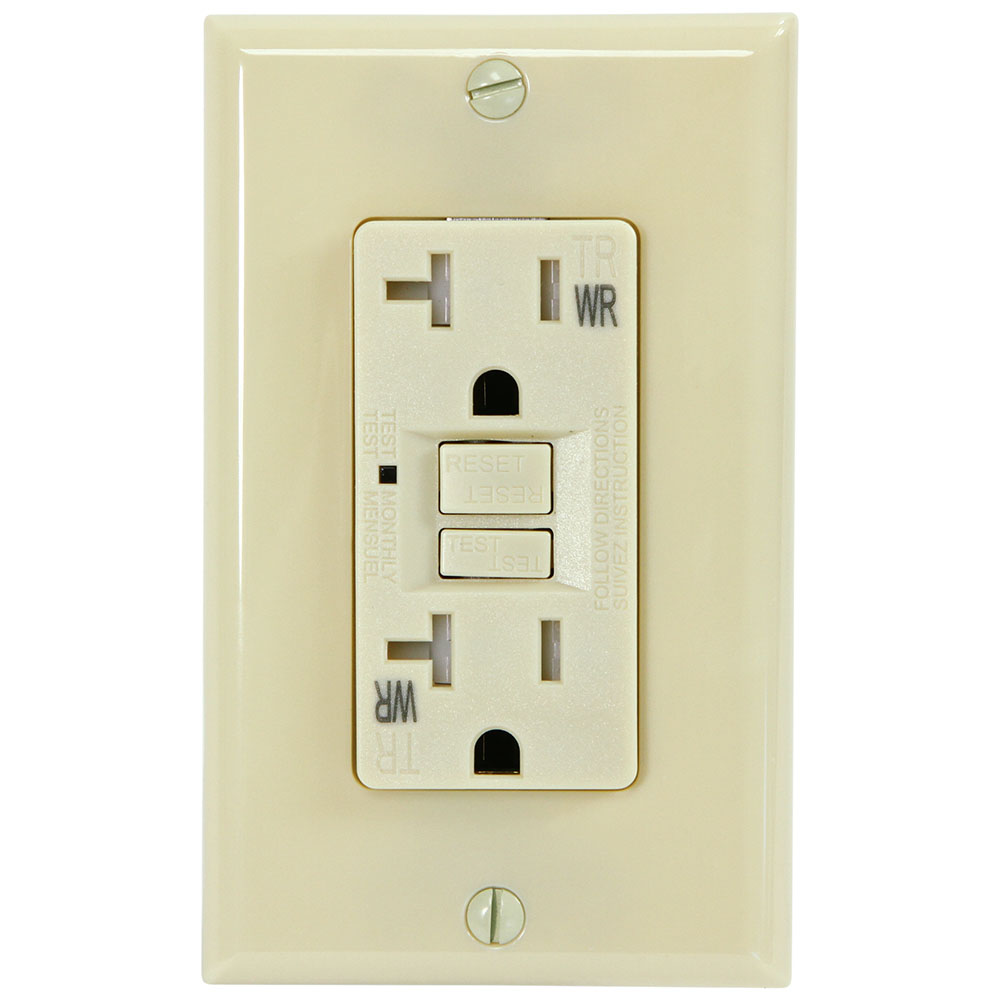Power distribution
From ASHI Electrical Power Booklet
If there are too few circuits or their loads are not distributed properly throughout the house, there may be frequent overloads. This kind of service is unsatisfactory and can be a potential fire hazard. If particular breakers trip regularly or specific fuses blow, an electrician should do a load calculation and make appropriate repairs. Each circuit in a house should be clearly labeled so the homeowner or others working on the system can tell which breaker or fuse controls specific outlets, appliance or lights.
Outlets/Receptacles
The modern, ideal arrangement of duplex receptacles, for safety and convenience, is one for every 12 feet of running wall space one on each wall of the average 10′-by-12′ room. No point on any wall should be further than 6′ from an outlet. The reason is to avoid the use of extension cords, which can become worn, broken, simply overheat and cause a fire. In the kitchen, there should be 20-arnp appliance circuits with outlets serving counters one for every four feet of running wall space. No point along the counter should be more than two feet from an outlet.

Modern homes are equipped with grounded three-slot receptacles. Grounding is installed to provide a safe path for electricity to return to the electrical panel if it gets out of its intended path. For instance, if you’re using a damaged piece of equipment, grounding is intended to complete the circuit and trip the breaker or fuse. Without grounding, the electricity might flow through you in its attempt to return to the panel.
Many older homes have two-slot receptacles. If you only use appliances with two-prong plugs, it isn’t necessary to upgrade. Any appliance with a three-prong plug needs a properly grounded three-slot receptacle. Sometimes an electrician can easily upgrade outlets; other times upgrading requires rewiring.
Even if a system is properly grounded, minor faults in a circuit can cause dangerous shock to a person using an electrical appliance in a damp location or near water. For this reason, the National Electrical Code®now requires a Ground-Fault Circuit Interrupter (GFCI) in damp places, such as bathrooms, kitchen/ bar countertops, hydro-massage tubs, hot tubs, swimming pools, unfinished basements, garages, accessory buildings, crawlspaces, and exterior receptacles. Exterior receptacles also require watertight covers.
The GFCI senses the flow of electricity through a circuit. If more current is flowing through the black (hot) wire than the white (neutral) wire, there is a current leakage. The GFCI, which can sense a ground leak of as little as .005 amps, will shut off the current in 1/40 of a second, which is fast enough to prevent injury.
If you do have Ground-Fault Circuit Interrupters, it is recommended you test (and reset) them monthly. When you push the test button, the reset button should pop out, shutting off the circuit. If it doesn’t pop out or the power stays on even though it pops out, the breaker is not working properly. If not tested once a month, the breakers have a tendency to stick and may not protect you when needed.
Arc-Fault Circuit Interrupters (AFC!) are the newest electrical safety devices. An AFC! senses an arc or short circuit and shuts off the electricity before the arcing can cause a fire. AFC! should also be tested and reset monthly.
Further protection is provided in the electrical system by the use of polarized plugs and outlets, to ensure that the hot and neutral wires of an appliance connect to the hot and neutral wires inside the receptacle. Polarized plugs have one prong wider than the other, so that the plug can only be inserted the correct way.
Conductors
Most homes are wired with copper.Nevertheless aluminum wiring was widely used in residential construction and remodeling from the 1960s through the mid 1970s. Such wiring can be identified by its dull silver color, not to be confused with older tin-coated copper wiring. The letters AL or the word Aluminum may be stamped on the sheathing or cable.
Homes wired with solid aluminum branch circuits have a greater potential of having hazardous conditions than those with wired copper. Common aluminum wire problems include the following:
- tendency to oxidize,
- incompatibility with the switches and outlets that were designed to be used only with copper,
- expands and contracts at different rates than copper creating loose connection, and
- improper splicing or connections.
These problem conditions create greater electrical resistance that translates into greater heat generation, which increases the potential for fire.
Warning signs of unsafe aluminum wiring include:
- unusually warm or warped outlet and switch cover plates,
- smoke or snapping noise coming from outlets and switches,
- plastic burning odors in the area of outlets or switches,
- flickering lights,
- intermittent operation of a switch or outlet, and
- dead circuits or outlets.
A house with aluminum wire may require improvements or may require rewiring, but only a qualified electrician should be allowed to evaluate and repair these potentially dangerous situations.
Modern electrical cables are usually composed of two, three or four insulated wires enclosed in a metallic (called armored) jacket, or in a non-metallic plastic cloth jacket.
In older homes, the conductors sometimes are not enclosed in jackets, but run as pairs of wires supported by porcelain fittings. This wiring system is called Knob-and-Tube wiring. Sections of the system may be visible in the attic or unfinished areas of a basement. While Knob-and-Tube wiring is not inherently dangerous, it is old, and its insulation may no longer be intact. Much of it will be concealed behind walls, ceilings and insulation, where its condition cannot be completely evaluated. It is also an ungrounded system, and therefore is more hazardous than others. In addition, previous homeowners may have improperly spliced into the circuits, thereby increasing the hazards.
If your home has Knob-and-Tube wiring, it would be wise to have the system inspected and repaired by a licensed electrician. If necessary, it should be replaced (which is likely).


